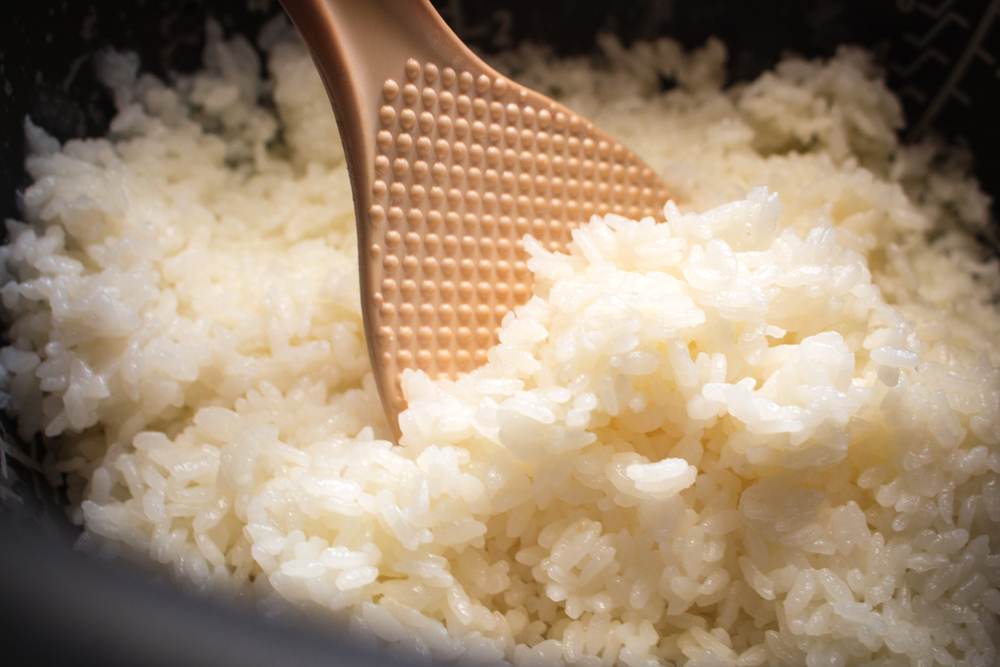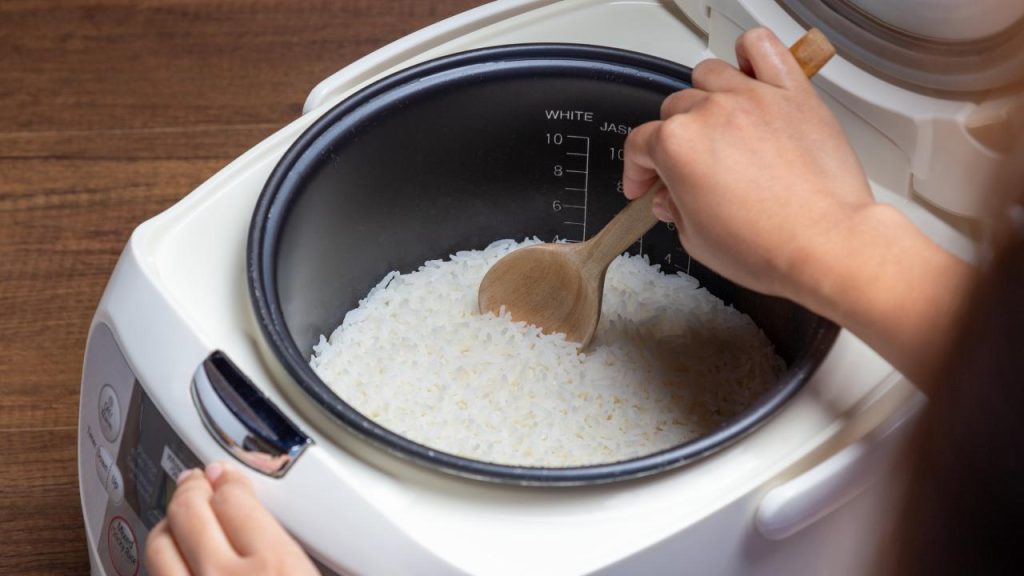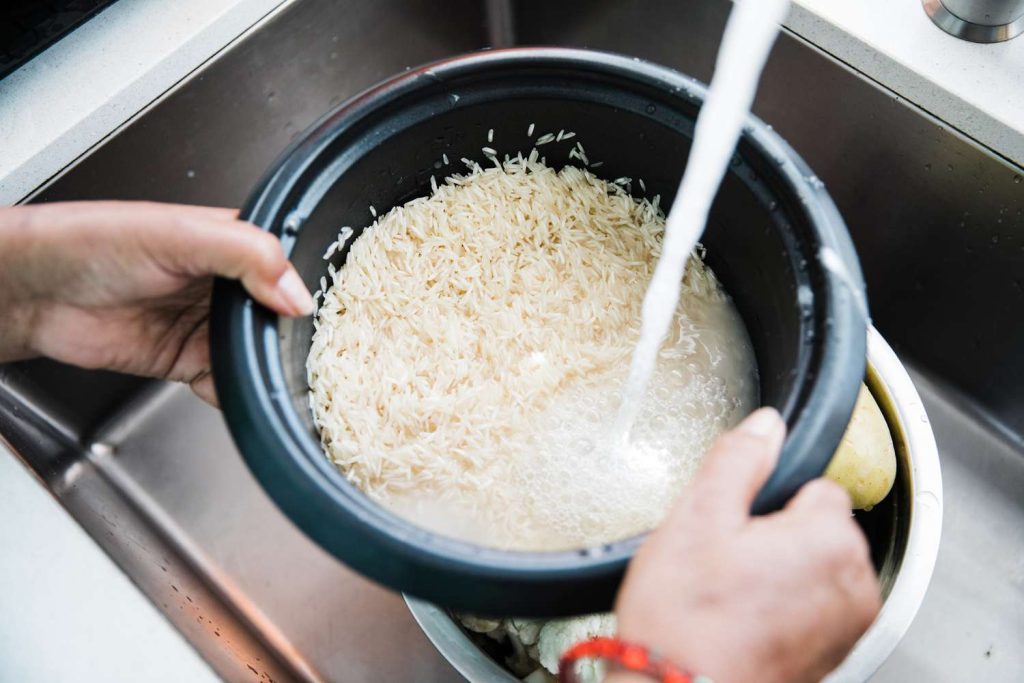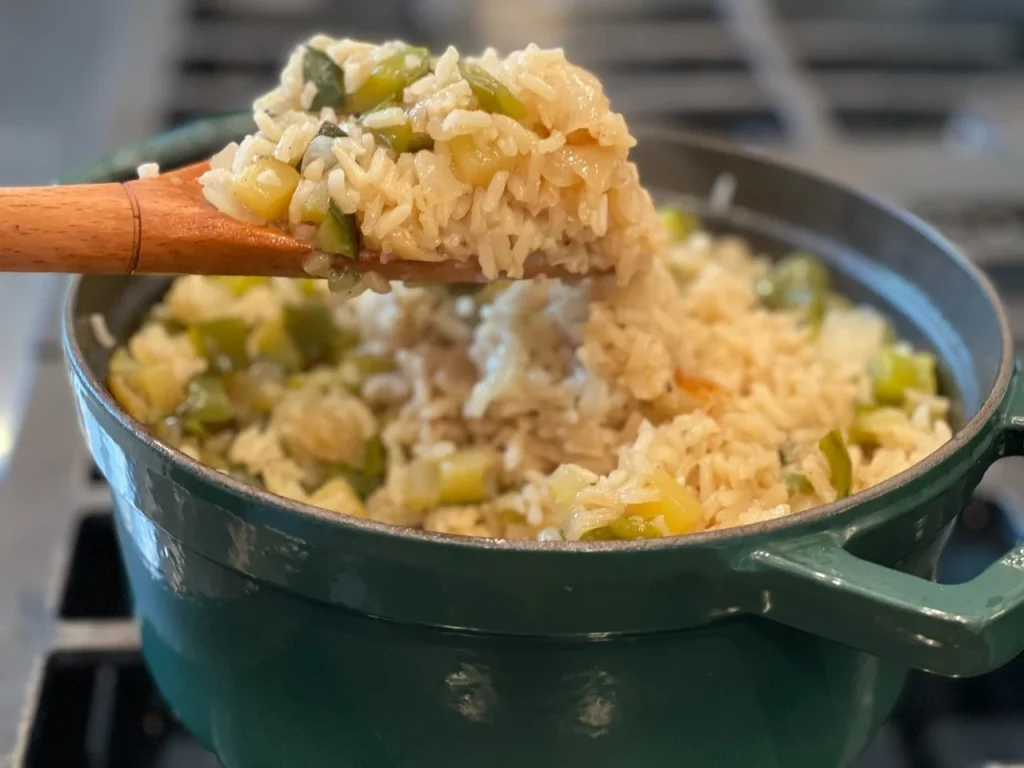The purpose of the rice paddle

Rice cookers are coated with a nonstick layer, meaning they should only be used with specific types of utensils, specifically plastic or wood. Utensils made from metal or other hard materials can scratch and damage this coating, causing it to peel and lose effectiveness. For this reason, the cooker comes with its own rice paddle, designed to be safe for use with the appliance.
In simple terms, the rice paddle is intended for stirring, scooping, and serving “rice” without crushing the grains. After the cooking cycle is complete, it’s beneficial to stir the rice, as this helps release any excess moisture and ensures an even texture throughout. The paddle is perfectly suited for this task, preserving the rice’s fluffiness. It’s also useful for mixing vinegar into rice for sushi preparation.
Should you get a rice cooker?

Beyond the paddle, rice cookers can be a game-changer if you cook rice often or aren’t comfortable cooking it on the stove. The process is straightforward; the bowl inside heats to a boiling point and then automatically switches to a lower setting or turns off when the rice is done. The cooker also includes a guide on how much water to add depending on the type and amount of rice, making it even easier to use.
“I love [a rice cooker] because it takes all the guesswork out of making perfect rice,” said Dale Talde, chef and owner of Goosefeather. “It’s a must-have appliance because even if you happen to put in too much water or not enough, it adjusts to help make perfect rice.”
But that’s not all. Rice cookers can also be used for cooking curries and stews. In fact, some models even have specific settings for these kinds of dishes. Many models also include quick-cook and delay start options, allowing you to plan meals in advance or cook at the last minute.
Always rinse!

Cooking rice on the stove

More rice cooking tips

- For added flavor, cook the rice with broth or a combination of water and coconut milk. You can also season it with spices like saffron or turmeric.
- Avoid stirring the rice while it’s cooking.
- To prevent the grains from sticking together when cooking on the stovetop, add a little oil.
- You can give freshly cooked stovetop rice a crispy texture by adding some oil to the pan and sautéing it.
- Make a large batch of rice, divide it into meal-sized portions, and freeze it for later use. When reheating, add a tablespoon of water and microwave it, or warm it in a saucepan with a bit of oil or water.
- Use leftover rice for making rice pudding, adding to soups or stews, or preparing fried rice.

